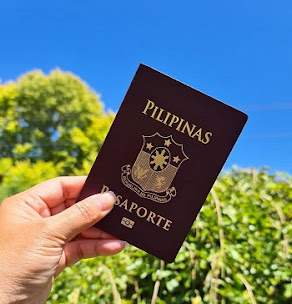What, indeed? As Mrs. Archer’s remark suggests, the woman in lack is always suspect.
Black implies you have something to hide, such as a colorful past. It’s a provocative color, one few people are indifferent to. Age-old associations link it with death, evil, and destruction. Wearing black implies transgression. Anna Karenina wore black to the ball at which Vronsky became smitten with her; her niece, Kitty, herself in love with Vronsky, wore pale pink – and failed utterly to get his attention.
When a woman puts on a black dress, the world assumes she’s sophisticated, sexual, and knowing. By eschewing the bright plumage of the hunted for the discreet attire of the hunter the woman in black is taking on the role of the aggressor. In pastels, she’s a target, passive. In black, she’s charting her own course.
 |
| Keira Knightly at Anna Karenina |
75 years after Wharton’s fictional black gown horrified New Yorkers, Cornell Woolrich, the great pulp novelist of the 1940s, used black to turn a traditional symbol of womanhood, the bride in her white gown, into an apocalyptic vision. In The Bride Wore Black, Woolrich’s bride, widowed on her wedding day by a car full of drunks as she and her husband descended the steps of the church, is an avenging fury. She tracks down every man responsible for her husband’s death, bewitches him, and kills him. In the film version, Jeanne Moreau plays the bride, stalking the streets in a little black dress by Chanel, the designer who did more than any other to put women in this emphatic color.
In Ellen Olenska’s time, no man wanted to marry a woman bold enough to choose black as her signature color (Ellen meets her husband not at her debut but in far less puritanical Europe, and Wharton insinuates that he is so singularly debauched that he might very well have been drawn to a girl in black) and the point of the coming-out ball was to launch debutantes into the marriage markets. Yet Ellen fascinates every other character in the novel. No one remembers the white dresses of the other girls, while Ellen’s raven toilette remains etched in memory. That’s not surprising – black is most effective when it is surrounded by less passionate shades. Ellen’s black dress symbolizes her individuality, her determination to live her life on her own terms.
 |
| a Victorian mourning dress |
It’s an appealing concept and one that has drawn generations of women to the little black dress. Indeed, the term has entered our cultural lexicon. Say it and everyone knows what you’re referring to: a dress that’s simple enough to appear effortless, yet elegant enough to mark the wearer as a woman of taste.
 |
| Lady Diana Spencer wearing a black gown |
This delicious ambiguity is what makes the LBD so attractive. By turns seductive or demure, bold or self-effacing, chic or gamine, it’s one of the big guns in any sartorial armory. Women as diverse as Lady Diana Spencer and Elizabeth Hurley have used LBDs to transform their public images, Diana with low-cut ball gown she wore for her first public appearance with Prince Charles, an eye-popper that prompted headlines such as SEE NIPPLES AND DI; and Hurley with the infamous Versace safety-pin dress that catapulted her in the eyes of the world from nice English girl to smoldering sexpot.
 |
| Elizabeth Hurley in wearing black Versace, with Hugh Grant |
Of course, not all black is quite so sexually charged. Black also suggests a uniform chicness that transcends mere fashion. The LBD is built on refusal. It doesn't give the wearer many props but rather lets her own self shine. It’s a lot to ask from a garment, as Coco Chanel acknowledged. “Scheherezade is easy,” she said. “A little black dress is hard.”
Mixed with white, as in the LBD by Yves Saint Laurent that Catherine Deneuve wears in the final scene of Belle de jour, black’s slinkiness is tempered, its purity emphasized Deneuve’s character, a bored housewife who moonlights as a prostitute is told that she looks like a “precocious schoolgirl” in the dress.
Black’s transformative powers are astounding. Fashion magazines once trumpeted it as an excellent choice for the plump, since it is reputed to have a slimming effect. But what about black’s more theatrical qualities? It can render the old sinister, the young heartbreakingly innocent, and the quiet forbidding. It’s strong stuff, so potent that it can’t always be faced on an empty stomach – as late as 1964, Genevieve Antoine-Dariaux warned, in her fashion etiquette book, Elegance, “The truly chic woman never wears black before noon.”
Black is usually discouraged on girls, on the grounds that it’s too worldly. Consequently, the first black dress is a milestone. My first important black dress was the one I wore to 2012 Philippine Fashion Week. I thought I looked divine – sophisticated, mysterious, and utterly unlike anyone else I was likely to encounter that evening.
Mothers and black dresses are often at odds. In Herman Wouk’s 1955 novel Marjorie Morningstar, the heroine, like Ellen Olenska, instinctively grasps the power of black. She persuades her mother to let her wear a slinky black to a dance when all the other girls are insipid in pastels. Thus attired, she catches the eye of a millionaire, leading her to deduce that her mother doesn’t know very much about clothes.
Black is a color laden with symbolism – terms such as black heart, black magic, and blackmail indicate its dark connotations. Black is the color of sin and the supernatural. But it’s also the color of asceticism, worn by the pious and the learned: Priests, nuns, scholars, hermits, and lawyers have all traditionally been shadowed in its sooty depths. Black is ideal for creating a dramatic air – Hamlet is usually depicted in black, as are the femmes fatales of both Gothic romances and film noir. Where would Rita Hayworth’s Gilda have been without her black, or, for that matter, Mrs. Danvers, the creepy housekeeper in Rebecca? Both knew how to work a black dress to their advantage.
In her book Seeing Through Clothes, the fashion historian Anne Hollander explains it might well have been this sense of drama that first launched black as a shade worn by the fashionable rather than the religious or grief-stricken. Fashionable black, she writes, did not appear until the 14th-century, after European clothing had evolved beyond simple robes for both sexes – the implication that being that only a highly sophisticated society has a need for fashionable black. In sartorial terms at least, “the Dark Ages” was a misnomer.
As the making of clothes evolved from a craft to an art, Hollander explains, “The symbolism of black could be used with creative perversity for emotional effect.” In other words, anyone who dressed in clothing that was both black and fashionable was very consciously exploiting the color’s contradictory traits. One of the first to mine this potential was Philip the Good, Duke of Burgundy, in the middle of the 15th-century. Philip used sumptuous but all-black costumes to set himself apart from his colorfully dressed courtiers, an affectation that probably made him appear both saintly and satanic. In a painting of him and his courtiers, Philip looks like a foppish existentialist at a garden party. By playing a stylish version of good cop/bad cop, he no doubts kept his entourage on their toes.
Hollander suggests that it is no accident that the rise of portrait painting in Europe coincided with the emergence of black as a fashionable shade. In its starkness, black isolates the wearer’s uniqueness. Used in a portrait, it emphasizes the individual rather than rank or family connection, thereby underscoring the humanistic views of the Renaissance.
The vogue for black spread from France to Spain, where it became a favorite of the pious aristocracy. Black was also a favorite of the upwardly mobile Dutch bourgeoisie, who considered it an ideal conduit for the discreet display of wealth, as black dyes were far more expensive than any other kind.
By the 16th-century, wearing black was no longer a way of standing out, but a way of blending in. Then, in the 17th century the aristocracy, followed by the middle classes, turned to paler shades, and black became associated with dowdiness and respectability. By the 19th century, black has reverted to its former status as a color worn almost exclusively for mourning. But as it faded out of mainstream fashion, black’s renegade past reemerged. It was adopted by the Romantics, who reveled in its dramatic mien. Black attire reinforced the image of Romantics had of themselves as lone, sensitive souls: In portraits of the era, wan-looking, black-clad young mean lean pensively on one arm, looking as though they might expire from the weight of their angst. The dandies of the Romantic era were the first to wear black evening clothes, a habit that eventually became de riguer for men of all dispositions. The demonic origins of this convention can still be seen in two figures that are, even now, represented in evening clothes: magicians and vampires.
While radical young men chose black as their emblem, for most of the 19th-century women wore it only for mourning. The clothes of fashionable women, in contrast to soberly colored male attire, were very bright, particularly after the invention of aniline dyes in the 1850s. This emphasized the decorative role that middle-and upper-class women were relegated to in Victorian times. They stayed indoors, where their gaudy hues wouldn't get soiled. Men, dressed in somber shades that protected them from the soot and dirt of the Industrial Revolution, ventured out into the world.
Mourning too had its sexy side. Black is becoming too many complexions and ideal for setting off the lines of the body. The mourning period lasted two and a half years with the first year and a day spent entirely in black. The most observant widows wore a fabric called bombazine at this stage, a textile that was renowned for absorbing rather than reflecting light so that a woman in deep mourning looked especially severe. From this austere costume, the widow moved on to black with black ornaments, and finally, subdued shades of lavender and gray-toned down with yet more black accessories. Compared to the over-the-top fashions of much of the 19th century, mourning clothes might very well have appeared quite smart. And unlike the other group of unavailable women, unmarried girls, widows weren't virgins. They were forbidden fruit, but ripe. A few daring women seized on the possibilities of this seductive style, and began wearing black when they wanted to appear especially memorable, whether they were in mourning or not.
Black continued to be associated with bereavement into the 20th century. Department stores even had mourning departments, where all the necessary accouterments could be ordered. With life expectancy still relatively low, a woman could expect to spend several years of her life in black, mourning various relatives. But it wasn’t until the Black Ascot of 1910 that mourning openly attained the heights of fashion. The annual race was (and in some circles, still is) the high point of the London Season, and a prime spot to parade the latest styles. It was not a place any woman would have dreamed of wearing black. However, when the high-living playboy Kind Edward VII died just a few weeks before the event, attendees couldn’t respectfully leave it off. Newspapers of the time were filled with accounts of the marvelous gowns that were seen. For at least one spectator, the effect was never to be forgotten: In the crowd was the young Cecil Beaton, who later created Audrey Hepburn’s memorable black-and-white costume for the Ascot scene in My Fair Lady.
Though the terrible of WW1 sent many women into widow’s the formal, 2 ½ years observation of mourning was largely abandoned after the end of the fighting. Faced with so much death, many felt that it was best to move on.
Despite the aversion to formal mourning, WW1 has accustomed to an eye to 2 factors necessary to the widespread acceptance of LBD, a term that was just coming into use: It was now socially acceptable to wear black on almost any occasion, and clothes had become much simpler. This was due partly to the large number of women who went to work during the war. Hampered by trailing draperies, they began to wear shorter skirts and less fussy blouses. Clothes were much smaller, too. A typical 1920s dress took two yards of fabric, compared to the ten or more necessary for prewar styles.
It’s tempting to ascribe the first LBD to CHANEL because it represents everything she stood for: modernity, streamlined practically, and a quiet, self-assured sexiness that no amount of trimmings can confer. The LBD faced forward, to the future. It was worn by slim young things with shingled hair and bare legs, flappers who drank bootleg gin and rejected the suffocating fashions of their mothers. Legend has it that the couturier Paul Poiret, a man who could not adapt to the new mood of the Jazz Age, asked the black-gowned Chanel, “For whom are you in mourning, Mademoiselle?” “For you, Monsieur,” was her cool reply.
Chanel had a predilection for black that was evident even in the nicknames given to her by friends, who called her both “a little black bull” and “a little black swan.” Yet it’s doubtful that Mademoiselle was the inventor of the LBD. When her famous design, dubbed fashion’s Model T by Vogue, debuted in 1926, black has been seeping into fashion for several years. Chanel was famous for her self-mythologizing, however, and the story has stuck. But surely, if anyone can claim to be the LBD’s spiritual grandmother, it is Chanel.
Who really did invent the LBD? No one woman or man did. The LBD was a product of necessity. As women’s lives became busier and their status depended less on displaying the wealth of the men they married to, they needed clothes that were stylish but easy, chic but versatile, beautiful yet practical. The LBD fits the bill.
After the crash of 1929, the LBD’s look of “poor chic” seemed particularly apt. Showy, rich-looking clothes were considered to poor taste, even among those who weathered the Depression unscathed. The clothes of the ‘30s were tough and no-nonsense, and black fit right in with the prevailing mood. Even Elsa Schiaparelli, whose surreal fantasies were the epitome of ‘30s high chic, frequently, chose black as the background for her whimsical experiments.
The 1940s and 1950s were the Golden Age of the LBD, a time when no well-dressed woman was without one or two. In 1944 Vogue purred, “10 out of 10 women have one – but ten out of ten want another because the little black dress leads the best-rounded life.” Fashion magazines of the postwar years are filled with images of soigné models dressed in LBDs, lipsticked, veiled, and wreathed in the smoke emanating from their still-glamorous cigarettes. Christian Dior, one of the period’s most influential designers, and the creator of the New Look captured the way women then thought about black when he said, “You can wear black at any time. You can wear it at any age. You may wear it on almost any occasion. A little black frock is essential to a woman’s wardrobe.”
This was the era of intellectual and artistic black. The French entertainers Edith Piaf and Julienne Greco wore LBDs. In coffeehouses and on campuses, beatniks compounded the Left Bank look with black tights and thick black eyeliner. Like the Romantics before them, those on the fringes of society in the 1950s used black to mirror their inner states. In the popular imagination, Audrey Hepburn’s pre-Pari makeover, a black-jersey-wearing character in 1957’s Funny Face was the embodiment of this style. As a mousy bookstore clerk and follower of the philosophy of “empathicalism,” Hepburn was Hollywood’s idea of a black-clad intellectual.
But it was Hepburn’s wardrobe in another film that represented the LBD’s crowning moment for millions of women. In 1961’s Breakfast at Tiffany’s Hepburn wore the same slim black Givenchy sheath in almost every scene – and always looked exactly right. The visions of Hepburn in that sublime frock and Jacqueline Kennedy in the little black dress she wore to her husband’s funeral are two of the enduring images in the 1960s. In fact, Hepburn’s legacy is such that thirty-three years later, when Barneys New York had the Givenchy dress copied, it sold out.
For the most part, the ‘60s were not a high point for the LBD. Designers turned them out, of course – both Mary Quant and Andre Courreges were fans of the LBD – and older women continued to rely on them. But fashion was in too playful a mood for the serious-mindedness of black. Black was associated with maturity, and fashion was preoccupied with youth. Whether space aged-influenced of flower power-enhanced, the clothes of the ‘60s were about the triumph of youthful sensibilities and the abandonment of convention. The old rules didn’t apply anymore, in fashion or in life. With the invention of the Pill and the launch of the sexual revolution, women in black weren’t the only ones promising a little naughtiness.
The nadir of the LBD came in 1968, when Cristobal Balenciaga shut his doors, declaring he was disgusted with fashion. Like his contemporary Dior, Balenciaga was a master of the LBD. He used black over and over again – no other color set off his unparalleled tailoring skills with such precision. And included in every single one of his collections was an LBD made entirely with his own hands. When she heard the news of his retirement, Mona, Countess Bismark, a legendary beauty and devotee of the LBD – Dali painted her in one – shut herself up in her New York apartment for three days to mourn.
In the late ‘70s, punk rock brought black back with a roar. A dark reaction to aging rockers and leftover hippies, punk was iconoclastic in nature. The movement’s fashion ground zero was Sex, Vivienne Westwood’s shop on London’s Kings Road. There, Westwood sold rubber fetish wear, including skintight black latex dresses: the LBD reimagined for a hostile generation.
Just as the hippie romanticism of the 1960s had moved from the street to the runway, punk’s aggressive stance became a major influence on high fashion. Designers such as Claude Montana and Azzedine Alaia, an impish favorite of the era’s statuesque models, created LBDs of leather and shiny, clingy fabrics that hugged the body like an insistent caress. In the sexually charged photographs of Helmut Newton and Chris von Wangenheim, the LBD looked not much classic as dangerous: Madame X took to the extreme.
The flip side of black, its nonsexual, shroudlike aspect, came to the fore in the early ‘80s with the rise of avant-garde Japanese designers such as Yohji Yamamoto and Rei Kawakubo. These designers favored clothes that hung loosely and symmetrically on the body and were often punctured with seemingly random cutouts. Their designs were almost always rendered in the somberest black. As Kawakubo said, “I work in three shades of black.” At first, this approach was shocking – the clothes were dismissed as depressing and morbid and compared to the shapeless garments worn by bag ladies. But after their initial dismay, critics came to appreciate the ingenuity and invention of these designers. At stores like Chirivari, the chicest shop in New York in the 1980s, they were top sellers. The Japanese designs cut fashion, and the LBD, loose from the retro-looking ‘70s and offered a modern alternative. Moreover, they ushered in a love of black that has yet to abate.
The fashionable obsession with black is now so entrenched that it’s become fodder for parody. In the 2000 film Intern, a spoof of the fashion industry, the tantrum-throwing art director for Skirt magazine instructs an underling – who has already been advised to wear more black – to stay after work to redecorate everyone’s desk with Philippe Stark’s new office accessories line. Naturally, the entire line is black.
Why does the fashion pack love black? For the same reasons that black is such a mainstay: It’s flattering, seductive, elegant, practical, engaging louche, and reliably chic. For those who work fashion’s front lines, black takes the worry out of getting dressed in the morning because it is always correct. Other colors are promoted as alternatives to black, of course. We hear that “brown is the new black” or that gray is. But inevitably, black returns. It’s better than new because it’s ageless.
Carinne Roitfeld, the renowned former stylist for Gucci and now the editor in French Vogue is a famous black wearer. Her signature is a knee-length black skirt or skinny black trousers worn with a black sweater and black stiletto. She also once told Vogue, “Brown is sad. Navy blue is conservative. And black is chic. I think when you live in a town like Paris, New York or London, it is gray all year and I don’t think turquoise, pink or yellow are so beautiful to mix with that weather. In the city, I wear black, gray, or white.”
Like Roitfeld and Wang, I think black is the best color to wear in the city. But my true appreciation for black is more philosophical than practical. In black, I feel like I am wearing my clothes, rather than wondering if they are wearing me. In black, I feel comfortable, self-assured, and unassailable. Against that somber screen, I feel like I shine brightly.



































Post a Comment